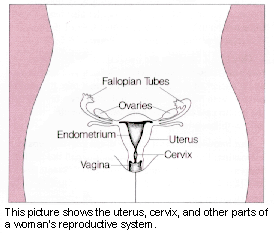- Coping With Short Term Effects of Menopause
- Menopause and Osteoporosis
- Menopause and Heart Disease
- Regular Physical Exams After Menopause
- Additional Resources and References
Menopause is the time in a woman’s life when she stops menstruating. Natural menopause is genetically pre-determined and typically occurs between the ages of 48 and 52. However, some women will go through menopause at an earlier or later age. Menopause is a normal biological event that all women experience. Once a woman reaches menopause, she can no longer bear children.
According to the North American Menopause Society, approximately 41.75 million American women were over age 50 in 2000, and approximately 31.2 million of those women were over 55 years (compared with 28.7 million in 1990). By 2020, an estimated 45.9 million women in the United States will be over age 55. Because of the increased life expectancy over the last several decades, it is estimated that most women go on to live one-third to one-half of their lives after they reach menopause.
Menopause is considered premature if it occurs before age 35. Premature menopause may occur for several reasons, including premature ovarian failure (POF), or from secondary changes, such as the surgical removal of both ovaries (oophorectomy), certain types of cancer treatment (such as chemotherapy or pelvic radiation), mumps, and certain autoimmune disorders such as lupus or rheumatoid arthritis. Also, women who smoke tend to go through menopause at an earlier-than-average age.
Before menstruation stops completely at menopause, most women will go through pre-menopause and peri-menopause. During pre-menopause, menstrual periods (menses) begin to become irregular. During peri-menopause, menstrual periods often become highly irregular and women may experience symptoms of menopause, such as hot flashes, vaginal dryness, or sleep disturbances. Peri-menopause occurs a few years before a woman reaches menopause. Once a woman reaches menopause, menstruation will stop forever unless she takeshormone replacement therapy.
In addition to short-term effects such as hot flashes, the decrease in levels of hormones that occur during menopause can increase the risk of osteoporosis and heart disease. Therefore, it is important that women maintain a healthy lifestyle and talk to their physicians about ways to protect themselves from future health problems.
The female reproductive system is made up of both external and internal organs.

Vulva: The term vulva refers to the external parts of the female genitalia. The upper portion of the vulva is covered with pubic hair in mature females. The lower portion of the vulva consists of the labia majora (outer lips), which are two folds of fatty tissue covered with skin. Inside the labia majora are the labia minora (inner lips), another two folds of tissue. The labia minora protect the opening of the urethra (urine canal) and the entrance to the vagina. Above the urethra, the labia minora join to form the tip of the clitoris. The clitoris plays a key role in female sexual arousal.
Vagina: The vagina is the canal that leads from the uterus to the outside of the body. It serves as a passageway for menstrual discharge and as the birth canal. In young girls, the opening of the vagina is covered by a thin membrane called the hymen. As a woman begins to increase physical activity, use tampons, or engage in sexual intercourse, the hymen is gradually stretched. The vagina tends to be dry in girls before puberty and in women after menopause.
Cervix: The cervix is the lower portion of the uterus that connects the uterus to the vagina. The opening of the cervix remains small except during labor when it expands to allow the baby to pass from the uterus to the vagina. Click here to learn more about cervical cancer.
Uterus: The uterus is a pear-shaped muscular sac that houses the fetus during pregnancy. During each menstrual cycle, the lining of the uterus (endometrium) thickens to prepare for possible pregnancy. If a woman does not become pregnant during this time, the endometrium is shed and exits the body through the vagina each month during menstruation. Menstruation ends at menopause.
Fallopian tubes: The Fallopian tubes are attached to the uterus and extend toward the ovaries. At the ends of each tube are fringe-like structures called fimbriae that wrap around each ovary. These fimbriae help guide the reproductive eggs (ova) that are released by the ovaries each month into the Fallopian tubes in pre-menopausal women. When an egg enter one of the Fallopian tubes, a series of contractions force the egg down toward the uterus. While an egg is traveling from the ovaries to the uterus through one of the Fallopian tubes, it may be fertilized by sperm released during sexual intercourse.



